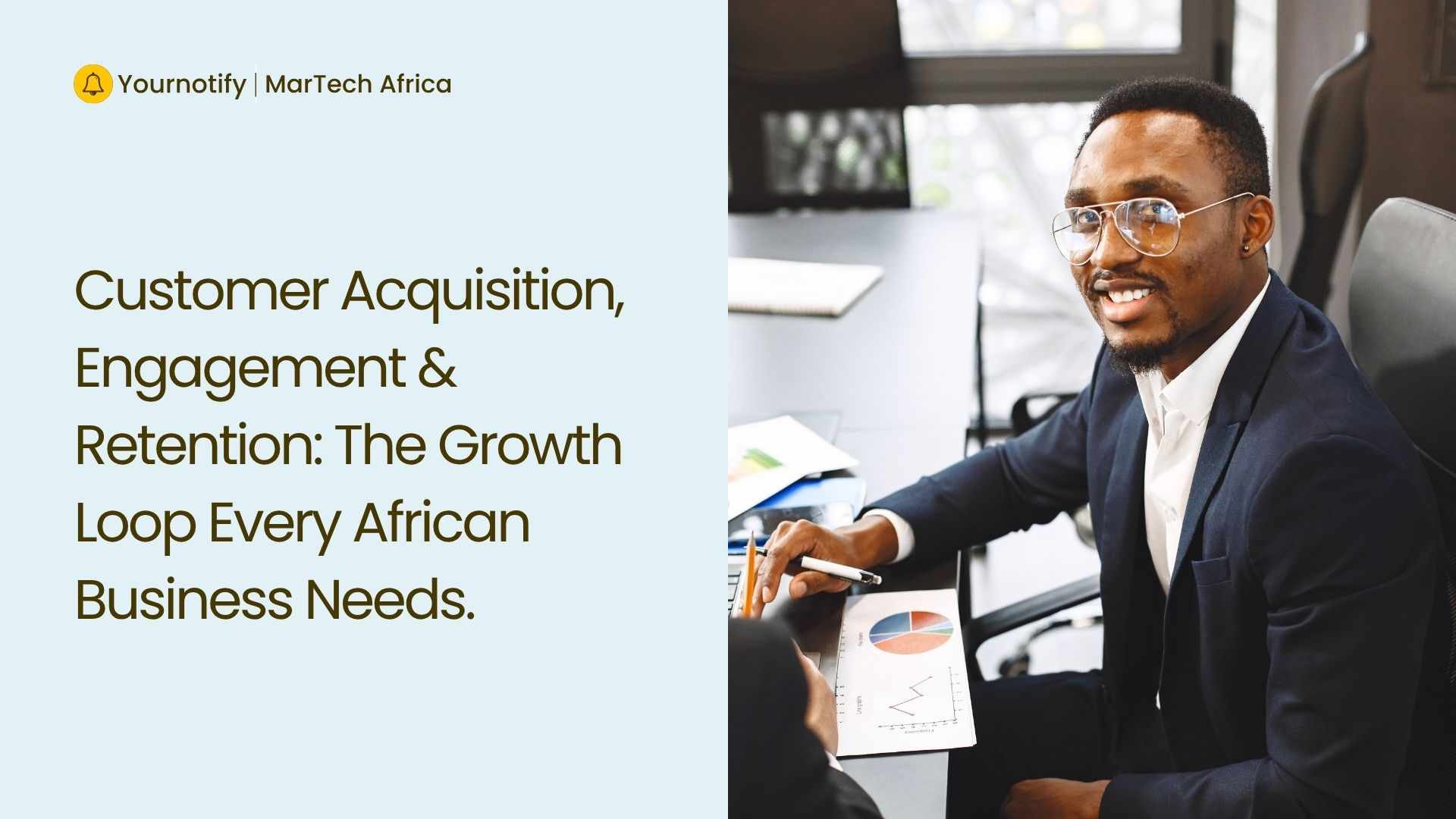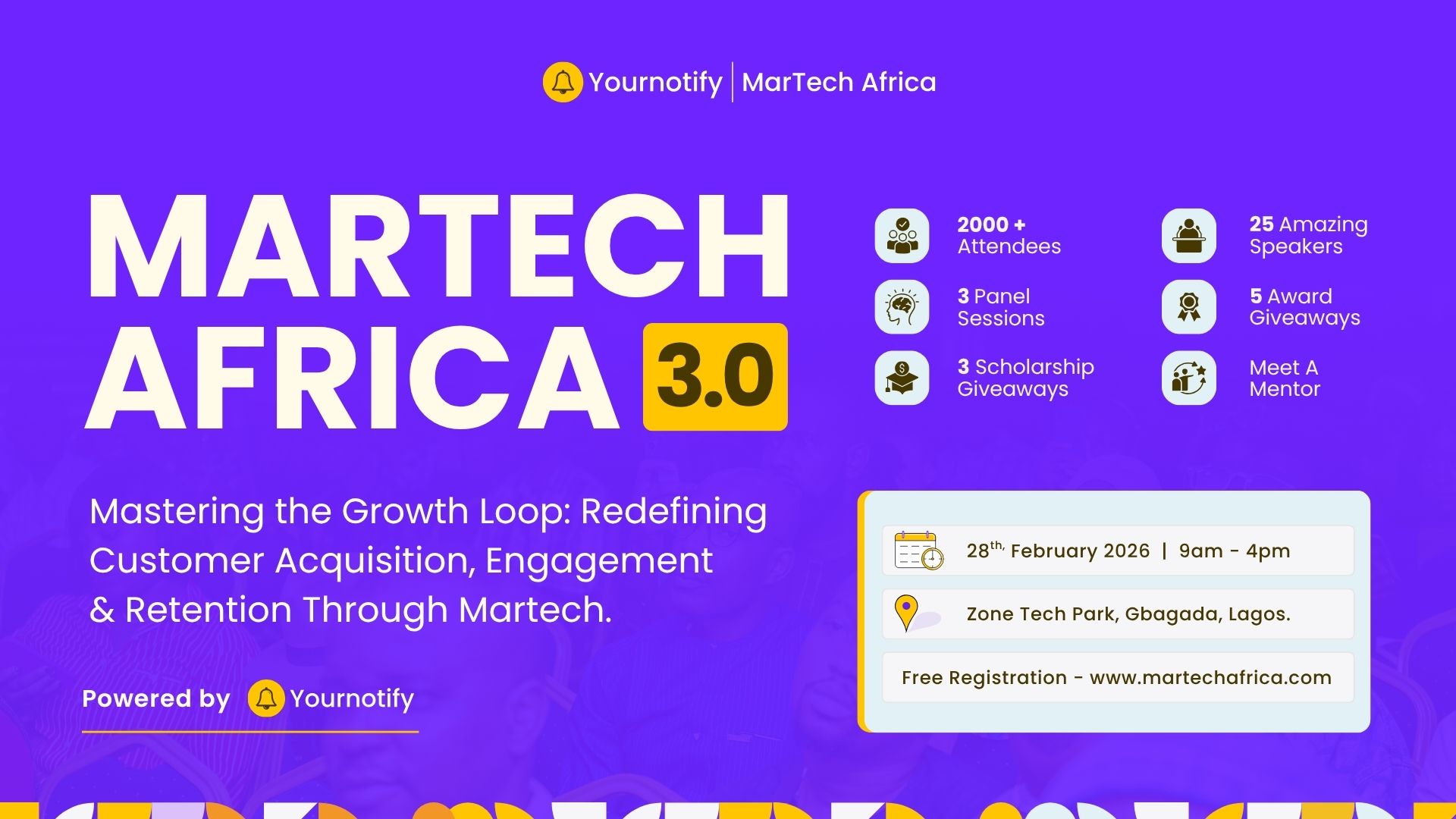If there’s one event that consistently sets the pace for marketing innovation on the continent,…

Customer Acquisition Engagement & Retention: The Growth Loop Every African Business Needs
For many African businesses, growth has traditionally been viewed as a linear journey: attract customers, convert them, hope they stick. While this approach is popularized in models like AARRR (Acquisition → Activation → Retention → Revenue → Referral), it provides useful metrics, today’s market requires a more dynamic, repeatable approach that reduces reliance on expensive ads, leverages customer behavior, and maximizes long-term value.
With rising acquisition costs, fragmented attention, and digital accessibility challenges, African companies must focus on strategies that turn every customer interaction into an opportunity for repeat engagement and advocacy.
The Rising Cost of Acquisition in the African Context
Globally, customer acquisition costs (CAC) are climbing sharply, driven by saturated paid channels, platform policy changes, and diminishing returns on traditional campaigns. Many companies are now investing in retention, product-led growth, and loop-based strategies to reduce long-term CAC
In Africa, the context is distinct: mobile-first users, improving internet penetration, and persistent affordability challenges create both opportunities and hurdles:
-
Economic impact of mobile tech: Mobile technologies contributed US$220 billion (7.7% of Africa’s GDP) in 2023
-
Internet penetration: Only 27% of sub-Saharan Africans use mobile internet, leaving a significant 60% usage gap
-
Connectivity growth: 4G connections are expected to reach ~50% of the population by 2030, while 5G may cover ~17%
These numbers highlight a critical opportunity: growth loops can maximize every user’s value, turning them into repeat customers and referrers without the cost of acquiring each new user through expensive paid channels.
The Three Pillars: Customer Acquisition Engagement & Retention
1. Customer Acquisition — Attracting the Right Users Efficiently
Acquisition remains a critical first step, but the focus should be quality and repeatability over sheer volume.
Strategies for African markets:
-
Localized content marketing: Produce content targeting high-intent, region-specific queries. For example: “Canva Pricing in Nigeria (2026 Guide)” can attract marketers comparing tools and convert them into trials.
-
Organic and social channels: Leverage WhatsApp groups, Telegram communities, LinkedIn networks, and local influencer partnerships to reach users at minimal cost.
-
Strategic paid campaigns: Use data-driven targeting to combine small-budget paid campaigns with organic methods, maximizing ROI.
Tactical tip: Prioritize content that solves immediate problems for users. This not only drives acquisition but also primes them for quick engagement.
2. Customer Engagement — Delivering Value Quickly
Users are more likely to stick if they experience value early and often.
Key approaches:
-
Fast onboarding: Reduce friction and get users to their first “win” in under 5–10 minutes. For example, a SaaS for marketers could allow users to generate a sample social ad instantly.
-
Guided product experiences: Use tooltips, tutorials, and templates to make adoption intuitive, particularly for mobile-first users.
-
Micro-learning modules: Embed short guides or workflow templates that enable users to create real results immediately.
Faster engagement leads to higher conversion rates, stronger retention, and a foundation for advocacy.
3. Customer Retention
Retention is the multiplier of acquisition: loyal customers generate repeat revenue and can become organic promoters of your brand.
Retention strategies for African businesses:
-
Lifecycle messaging: Trigger personalized notifications to encourage repeat use.
-
Rewards and incentives: Mobile-money credits, feature unlocks, or local-currency discounts resonate strongly.
-
Community participation: Encourage users to share experiences, ask questions, and contribute content in brand-hosted communities.
Companies that invest in retention-focused initiatives often see 30–50% lower effective CAC as each user generates additional value through repeat engagement or referrals.
Practical Tactics to Accelerate Growth
-
Leverage Community Networks: Use WhatsApp, Telegram, and LinkedIn groups to create peer-driven engagement and referral opportunities.
-
Optimize Payments and Pricing: Accept mobile money and local currencies to reduce conversion friction.
-
Content Clusters Focused on High-Intent Queries: Build regional SEO content to capture traffic actively seeking solutions.
-
Data-Driven Personalization: Track usage patterns to tailor messaging, suggestions, and offers for maximum impact.
-
Automation at Scale: Implement onboarding journeys, re-engagement campaigns, and win-back flows to maintain engagement with minimal manual effort.
Metrics to Monitor in Customer Acquisition Engagement & Retention
To understand the effectiveness of these strategies, track the following metrics:
-
Customer Acquisition Cost (CAC): Paid vs organic vs referral channels
-
Activation Time: Minutes to first meaningful action or first value realization
-
Retention Cohorts: 7-, 30-, 90-day active user retention
-
Referrals per Customer: How many new users each existing user generates
-
Engagement Velocity: Speed and frequency of user actions contributing to growth
Common Pitfalls in Customer Acquisition Engagement & Retention
-
Attempting too many acquisition channels at once. You start small and optimize iteratively.
-
Neglecting the first-value moment: if users don’t experience quick success, adoption stalls.
-
Ignoring measurement: track both engagement and referral data to optimize strategy.
-
Over-relying on paid channels: sustainable growth comes from repeatable, low-cost user-driven mechanisms.
For African businesses, sustainable growth comes from strategic acquisition, fast engagement, retention-focused product design, and community-driven advocacy. By understanding local behaviors, optimizing for mobile-first users, and creating repeatable mechanisms to generate value from every user, businesses can reduce CAC, increase lifetime value, and achieve compounding, sustainable growth in competitive African markets.
Related Content
MarTech Africa 3.0: The Conference That’s About to Change How African Brands Grow


